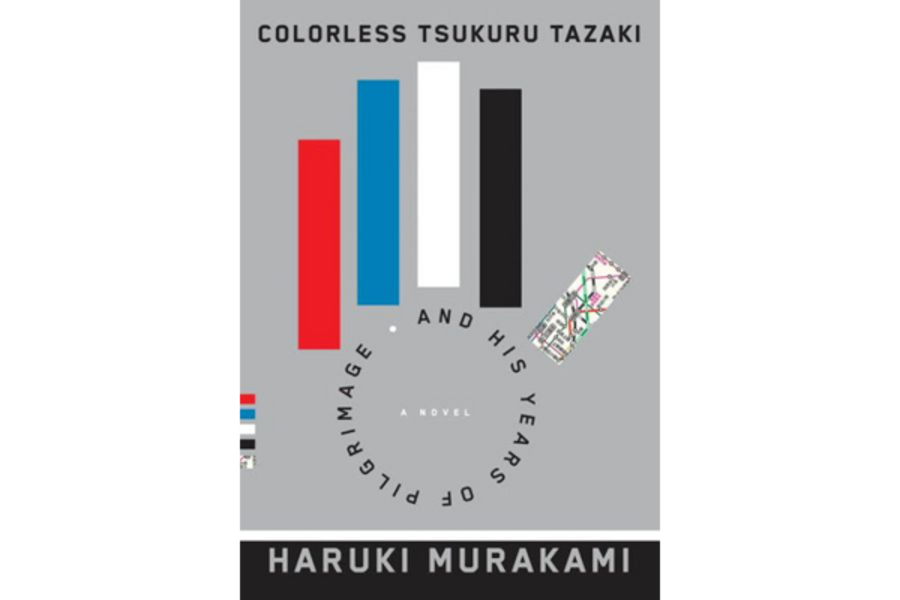'Colorless Tsukuru Tazaki and His Years of Pilgrimage' is straightfoward and un-Murakami-like
Loading...
Haruki Murakami is a unique kind of literary superstar. He’s peers with the greatest contemporary writers and a perennial Nobel favorite, yet he attracts a popular following that almost no other writer of his stature can match. His work is destined to be included on college syllabuses for decades to come, but at the same time, his fans revere him with a kind of cult-level intensity that can seem unsophisticated by the standards of serious fiction.
Murakami’s previous novel, "1Q84," was representative of the style he’s honed over the course of (now) 14 novels. It was set in a bizarre alternate world where two moons hung in the sky, it was charged with adolescent sexuality, and it dealt with plain, basic emotions – loneliness, longing – in a way that felt, and feels, startlingly simple compared to the muddled, complicated way we often perceive our own lives. It was a fantastic book, and vintage Murakami.
His newest novel, Colorless Tsukuru Tazaki and His Years of Pilgrimage, is different. Stylistically, it’s one of Murakmi’s most straightforward books, similar to the largely realist approach he adopted in “Norwegian Wood.” “Colorless Tsukuru Tasaki” features an erotic dream sequence that blurs the boundaries with real life, and a strange, allegorical story about a virtuosic jazz pianist playing his last tune. Other than that, though, the events in the book are, in very un-Murakami-like fashion, pretty much as they appear.
Tsukuru Tazaki, 36, lives in Tokyo, where he works as an engineer designing train stations, and leads a spare, even empty life: He rarely drinks more than half a beer, swims long, thoughtless laps at a local pool, and feels like a “refugee from his own life.”
What Tsukuru is seeking refuge from, is a trauma that took place almost 17 years earlier, when he was unceremoniously cut out of a very close-knit group of friends he’d had since high school. The uniqueness of this group of five is asserted, more than shown, which creates a kind of unstable foundation for the whole story: We’re expected to respond to Tsukuru’s break with his friends as if he’d lost something sublime, but it’s hard to really feel, as a reader, exactly what that sublime thing was. It’s just one way that Tsukuru is a difficult character to approach with real feeling.
But the point is, Tsukuru’s friends shut him out, the end was abrupt, and the after-effects almost killed him. One day everything is completely normal, and the next, he comes home on a college break, and none of his friends will return his calls. Finally, he has a clipped phone conversation with Ao, one of the three boys in the group, and Ao tells him: “I’m sorry, but I have to ask you not to call any of us anymore.”
Tsukuru neither gets an explanation for his peremptory dismissal nor seeks one, and instead returns to Tokyo where for a year he can barely eat and nearly wastes away in despair. Eventually he’s able to pull himself back from the brink, but the life he returns to is colorless. He floats, regarding himself as fundamentally defective – a person with no real appeal to others, and no real inner life of his own.
Then he meets Sara, an attractive and self-possessed woman, and the pattern breaks. They go on a few dates, sleep together once, and seem to like each other. Their relationship is typical, maybe, of the unmomentous way people meet in their late-thirties, though also atypical for a Murakami novel, where sex is often either completely emotionless or so profound it disrupts reality.
The early stages of Tsukuru and Sara’s relationship exist somewhere in the great normal middle, which is, for this fan at least, kind of an alarming place to find Murakami. One of the most powerful things about his fiction is the way he depicts life in an elemental way – as an epic, if personal, quest, to resolve universal issues of memory, childhood, and human connection. To see him covering the much less grand terrain of near middle age is startling, like finding out that one of your heroes also spends time paying his bills or going in for a prostate exam.
There is, though, a quest element to “Colorless Tsukuru,” which Sara impels. She tells Tsukuru that she likes him, but can’t commit to him unless he resolves his emotional issues. This will require tracking down his old friends and learning why they turned away from him. Tsukuru sets out to talk to each of his former friends, feeling that his chances of ever being happy in life depend on what he learns from them.
Murakami’s characters usually operate as ciphers, and Tsukuru is no exception. It’s rare to finish one of Murakami's books feeling a strong identification with his characters, and it’s the mood his stories provoke, more than the people in them, that tends to stay with you long after you’ve finished his books. In Murakami’s hands this is usually a powerful approach. His spare style, it’s said, translates easily between Japanese and English and his themes also travel well.
The emotions in “Colorless Tsukuru,” however, are elusive. The book does have its moments, including a powerful, extended section where Tsukuru travels to Finland. But overall the novel shows the limitations of Murakami’s style at its extremes. His best writing settles over you like fog, but “Colorless Tsukuru” is so indeterminate, so light of being, that it ends up feeling like there isn’t much there at all.








